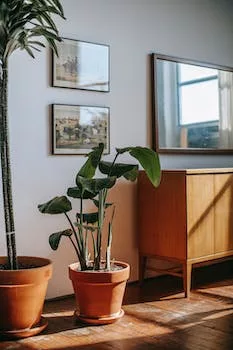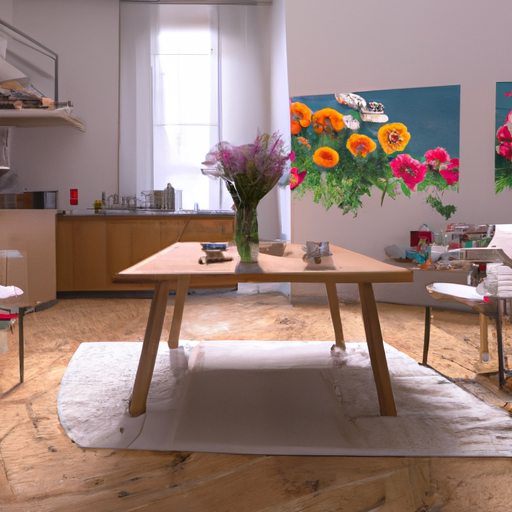Adapting to Changing Lifestyles: The Role of Flexibility in Home Design
The importance of flexibility in home design cannot be overstated, as it plays a crucial role in adapting to the ever-changing lifestyles of homeowners. As families grow, shrink, or experience other significant life changes, the need for a home that can accommodate these shifts becomes increasingly important. By incorporating flexibility into the design of a home, architects and designers can create spaces that are not only functional and aesthetically pleasing but also adaptable to the evolving needs of the occupants.
One of the primary reasons for the growing emphasis on flexibility in home design is the changing nature of family structures. In the past, the traditional nuclear family was the norm, with a married couple and their children living together in a single home. However, today’s families are much more diverse, with single-parent households, multi-generational families, and blended families becoming increasingly common. As a result, homes must be designed to accommodate a wide range of family dynamics and living arrangements.
For example, a flexible home design might include a main living area that can be easily reconfigured to create separate spaces for different generations or family members. This could involve the use of movable walls, sliding doors, or modular furniture that can be rearranged as needed. Similarly, bedrooms and bathrooms may need to be designed with accessibility in mind, ensuring that they can be easily adapted for elderly or disabled occupants.
Another factor driving the need for flexibility in home design is the rise of remote work and the increasing importance of home offices. With more people working from home than ever before, it is essential that homes provide dedicated spaces for work and productivity. A flexible home design might incorporate a home office that can be easily converted into a guest room or additional living space when not in use. This not only maximizes the functionality of the home but also ensures that it can adapt to the changing work habits of its occupants.
In addition to accommodating changing family structures and work habits, flexible home design also plays a crucial role in promoting sustainability and reducing the environmental impact of residential buildings. By designing homes that can be easily adapted to the changing needs of their occupants, architects and designers can help to reduce the need for costly and resource-intensive renovations or extensions. This not only saves homeowners money in the long run but also helps to minimize the environmental impact of the construction industry.
One way in which flexibility can be incorporated into sustainable home design is through the use of modular construction techniques. Modular homes are built using pre-fabricated components that can be easily assembled, disassembled, and reconfigured as needed. This allows homeowners to easily adapt their homes to their changing needs, without the need for extensive renovations or additional construction. Modular homes also tend to be more energy-efficient and environmentally friendly than traditional stick-built homes, further contributing to their sustainability credentials.
In conclusion, the importance of flexibility in home design cannot be overstated, as it plays a crucial role in adapting to the changing lifestyles of homeowners. By incorporating flexible design elements into residential buildings, architects and designers can create homes that are not only functional and aesthetically pleasing but also adaptable to the evolving needs of their occupants. This not only benefits homeowners by providing them with spaces that can grow and change with them but also contributes to the broader goals of sustainability and environmental responsibility. As our society continues to evolve, it is essential that our homes are designed with flexibility in mind, ensuring that they can adapt to the diverse and ever-changing needs of their occupants.
Future-Proofing Your Home: The Benefits of Flexible Design Solutions

The importance of flexibility in home design cannot be overstated, especially in today’s rapidly changing world. As our lives evolve, so do our needs and preferences, and our homes should be able to adapt accordingly. Future-proofing your home through flexible design solutions is not only a smart investment but also a way to ensure that your living space remains functional, comfortable, and aesthetically pleasing for years to come.
One of the primary benefits of flexible design is its ability to accommodate the changing needs of a household. As families grow or shrink, flexible design allows for the easy reconfiguration of spaces to suit new requirements. For example, a spare bedroom can be transformed into a home office, a nursery, or a hobby room, depending on the current needs of the occupants. This adaptability can save homeowners the time, effort, and expense of moving or undertaking major renovations.
In addition to meeting the evolving needs of a household, flexible design can also help to maximize the use of available space. In urban environments where space is often at a premium, it is essential to make the most of every square foot. Flexible design solutions, such as movable walls, multi-functional furniture, and clever storage options, can help to create a more efficient and adaptable living environment. By making it easier to reconfigure and repurpose spaces, flexible design can help homeowners to get more out of their homes, both in terms of functionality and enjoyment.
Another significant advantage of flexible design is its ability to enhance the sustainability of a home. As environmental concerns become increasingly important, many homeowners are looking for ways to reduce their ecological footprint. Flexible design can contribute to this goal by promoting the efficient use of resources and minimizing waste. For example, by allowing spaces to be easily adapted to new purposes, flexible design can reduce the need for major renovations and the associated consumption of materials and energy. Furthermore, flexible design can also support the integration of energy-efficient technologies and systems, such as solar panels or smart home devices, which can help to reduce a home’s environmental impact over time.
In addition to its practical benefits, flexible design can also have a positive impact on the overall aesthetic of a home. By allowing for the easy rearrangement of spaces and the incorporation of new design elements, flexible design can help to keep a home looking fresh and up-to-date. This can be particularly important in today’s fast-paced world, where design trends and preferences can change rapidly. By embracing flexible design solutions, homeowners can ensure that their living spaces remain visually appealing and in line with their personal tastes, without the need for constant redecoration or remodeling.
Finally, it is worth noting that flexible design can also contribute to the long-term value of a home. As the needs and preferences of potential buyers are likely to change over time, a home that can easily be adapted to suit different requirements is likely to be more attractive on the real estate market. By investing in flexible design solutions, homeowners can not only enhance their own enjoyment of their living spaces but also potentially increase the resale value of their property.
In conclusion, the importance of flexibility in home design cannot be overstated. By embracing adaptable and versatile design solutions, homeowners can future-proof their homes, ensuring that they remain functional, comfortable, and visually appealing for years to come. As our lives continue to evolve, it is essential that our homes are able to adapt with us, and flexible design is the key to achieving this goal.
Embracing Versatility: How Flexible Home Design Enhances Functionality and Comfort
The importance of flexibility in home design cannot be overstated. As our lives evolve, so do our needs and preferences. A well-designed home should be able to adapt to these changes, providing a comfortable and functional living space that can grow and change with us. Embracing versatility in home design not only enhances functionality and comfort but also ensures that our homes remain relevant and valuable over time.
One of the key aspects of flexible home design is the ability to reconfigure spaces to suit changing needs. This can be achieved through the use of movable walls, modular furniture, and multi-functional spaces. For example, a living room can be easily transformed into a guest bedroom by incorporating a fold-out sofa or a Murphy bed. Similarly, a home office can double as a playroom or a workout space, depending on the needs of the occupants. By designing spaces that can serve multiple purposes, homeowners can maximize the use of their square footage and ensure that their homes remain functional and adaptable over time.
Another important aspect of flexible home design is the incorporation of universal design principles. Universal design aims to create spaces that are accessible and usable by people of all ages, abilities, and sizes. This can include features such as wider doorways, lower countertops, and grab bars in bathrooms. By incorporating these elements into a home’s design, homeowners can ensure that their homes remain comfortable and functional for all occupants, regardless of their age or physical abilities. This not only enhances the overall comfort and usability of the home but also increases its marketability and value, as more buyers are seeking homes that can accommodate a diverse range of needs.
In addition to reconfigurable spaces and universal design principles, flexible home design also involves the use of durable and low-maintenance materials. As our lives become busier and more demanding, it is essential that our homes are designed to withstand the test of time and require minimal upkeep. This can be achieved through the use of high-quality materials, such as hardwood flooring, stainless steel appliances, and quartz countertops. These materials not only provide a timeless and elegant aesthetic but also require minimal maintenance and are resistant to wear and tear. By investing in durable materials, homeowners can ensure that their homes remain functional and attractive for years to come.
Furthermore, flexible home design also takes into consideration the need for energy efficiency and sustainability. As energy costs continue to rise and the impact of climate change becomes more apparent, it is essential that our homes are designed to minimize their environmental footprint. This can be achieved through the use of energy-efficient appliances, high-performance windows, and proper insulation. Additionally, incorporating renewable energy sources, such as solar panels or geothermal heating systems, can further enhance a home’s sustainability and reduce its reliance on non-renewable resources. By prioritizing energy efficiency and sustainability in home design, homeowners can not only reduce their environmental impact but also save money on utility bills and increase the overall value of their homes.
In conclusion, embracing versatility and flexibility in home design is essential for creating spaces that can adapt to our changing needs and preferences. By incorporating reconfigurable spaces, universal design principles, durable materials, and energy-efficient features, homeowners can ensure that their homes remain functional, comfortable, and valuable over time. As our lives continue to evolve, it is crucial that our homes are designed to grow and change with us, providing a supportive and adaptable environment that enhances our overall quality of life.
Q&A
Question 1: Why is flexibility important in home design?
Answer 1: Flexibility in home design is important because it allows for easy adaptation to changing needs, lifestyles, and preferences of the occupants, ensuring the home remains functional and comfortable over time.
Question 2: How can flexibility be incorporated into home design?
Answer 2: Flexibility can be incorporated into home design through the use of open floor plans, multi-functional spaces, adaptable furniture, and easily modifiable features such as movable walls or partitions.
Question 3: What are the benefits of having a flexible home design?
Answer 3: The benefits of having a flexible home design include increased functionality, cost-effectiveness, improved accessibility, and enhanced resale value, as well as the ability to accommodate various life stages and events, such as growing families, aging in place, or working from home.
Conclusion
In conclusion, the importance of flexibility in home design cannot be overstated, as it allows homeowners to adapt their living spaces to changing needs, preferences, and lifestyles. By incorporating versatile elements, multi-functional spaces, and easily modifiable layouts, flexible home design ensures long-term functionality, comfort, and value for residents, while also promoting sustainability and efficient use of resources.


